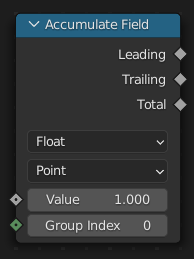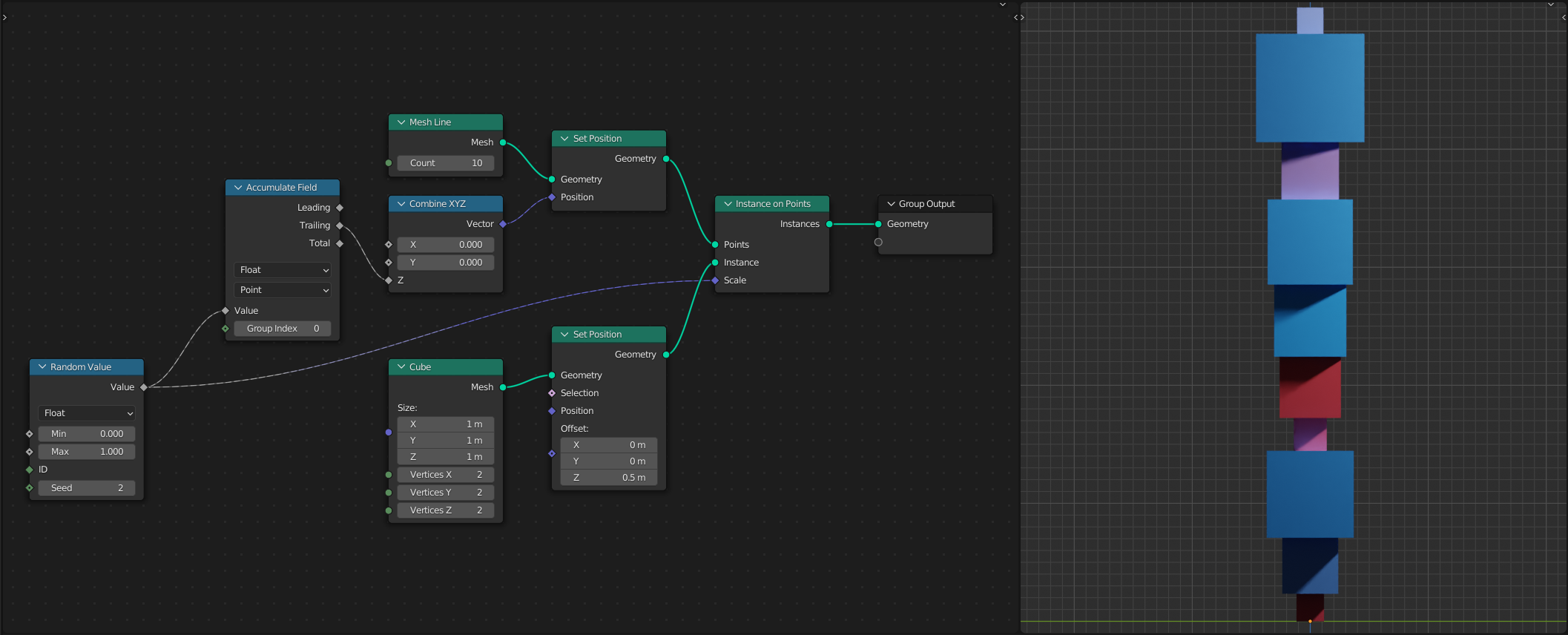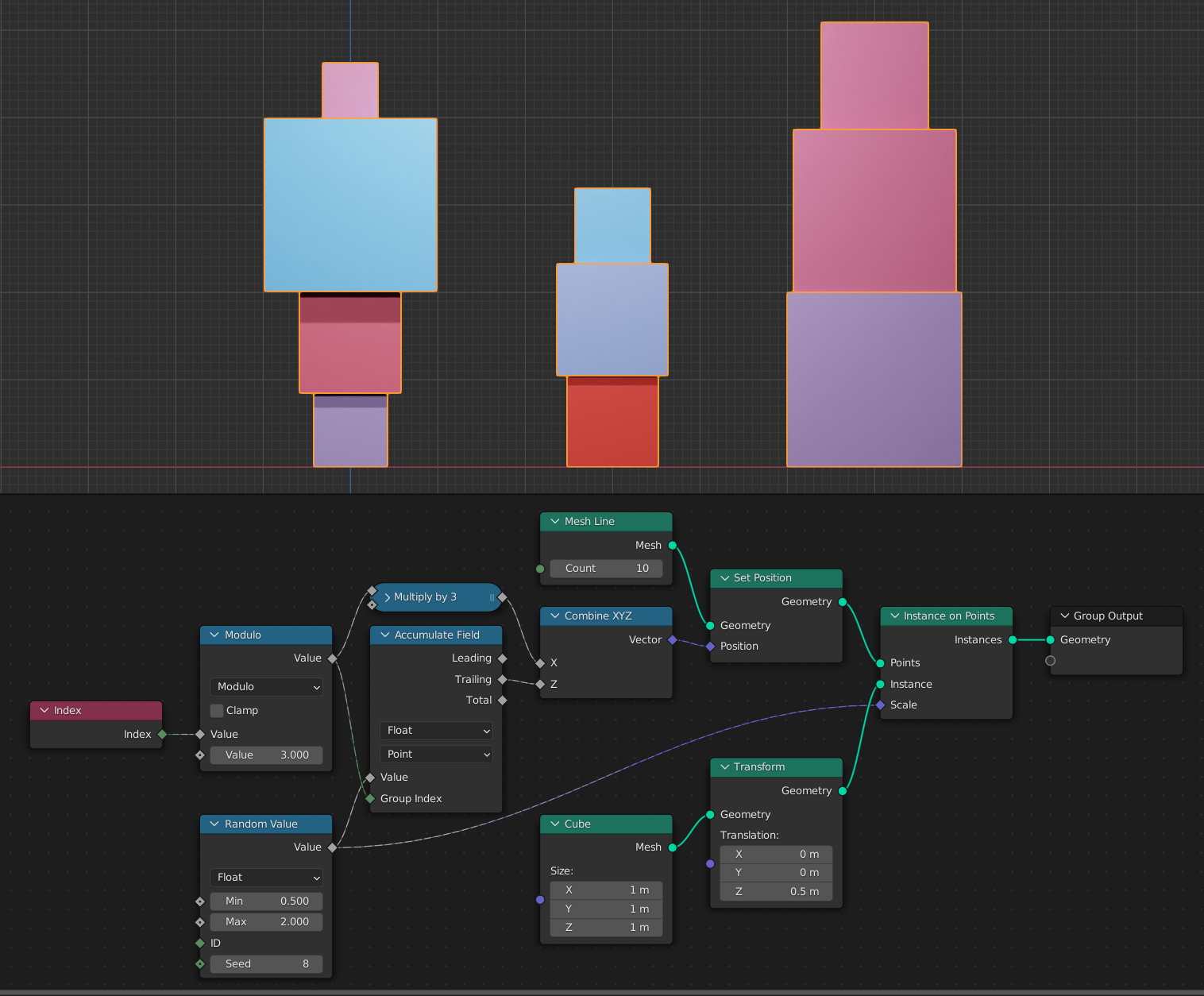累积场

累积场 节点按照几何体的编号定义的顺序,计算其输入值的运行总量。该节点的基本操作只是加法,但它不只输出最后的总量,而是输出每个元素的当前值。
输入
- 数值
要累积的值。
Warning
When accumulating integer values, be careful to make sure that there are not too many large values. The maximum integer that Blender stores internally is around 2 billion. After that, values may wrap around and become negative. See wikipedia for more information.
- 组编号
一个索引,用于将多个单独的累积值组合在一起。这可以被认为是对每个值的 "bin" 的选择。当它只是一个单一的值时,这个输入没有影响。
属性
- 数据类型
- 浮点:
节点将累积到一个 浮点 场。
- 整数:
节点将累积到一个 整数 场。
- 矢量:
节点将累积到一个 矢量 场。
- 域
属性域,用于累积和评估 值 输入。
输出
- 首
相应组中数值的运行总量,从第一个数值开始。
- 尾
相应组中数值的运行总量,从零开始。
- 总数
相应组内所有数值的总和
示例
一览表
数值 |
组编号 |
首 |
尾 |
总数 |
|---|---|---|---|---|
1 |
7 |
1 |
0 |
6 |
3 |
7 |
4 |
1 |
6 |
2 |
7 |
6 |
4 |
6 |
1 |
3 |
1 |
0 |
3 |
0 |
3 |
1 |
1 |
3 |
2 |
3 |
3 |
1 |
3 |
A few examples of input values and the node's results. One important take-away from this table is that the specific values for the Group Input does not matter; it only matters that the values are shared between elements.
码放方块

这里,该节点与随机值结合使用,以创建一个随机缩放的盒子堆。没有使用 组编号 输入,因为所有的盒子都要在同一个堆栈中。

上一个例子的稍复杂版本,使用 组编号 输入来创建三个独立的堆栈。